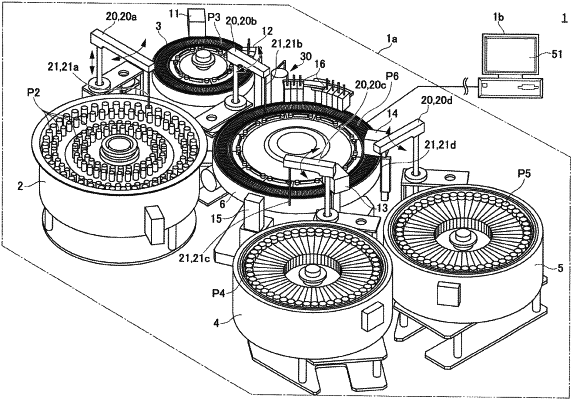| CPC G01N 35/1016 (2013.01) [G01N 35/1002 (2013.01); G01N 35/1004 (2013.01)] | 6 Claims |

|
1. An automatic analyzer comprising:
a specimen holding unit configured to hold a plurality of specimen containers in which a plurality of specimens are stored;
a dispensed container holding unit configured to hold a plurality of dispensed containers;
a dispensing probe configured to separate a predetermined amount of a respective specimen from one of the plurality of specimen containers, and configured to dispense the respective specimen that has been separated into a respective dispensed container among the plurality of dispensed containers;
a probe washing device configured to wash a leading end of the dispensing probe in a washing liquid, after the respective specimen is dispensed into the respective dispensed container and before a next predetermined amount of the respective specimen is separated; and
a controller configured to control driving of the dispensing probe, wherein
the controller comprises an arithmetic processing unit configured to:
calculate, for every specimen, based on an initial amount of each individual specimen stored in each corresponding specimen container, specimen usage amounts of a plurality of measurement items set for each individual specimen, and a washing liquid introduced amount into each corresponding specimen container, a concentration of each individual specimen in each corresponding specimen container, each individual specimen being subject to dilution with the washing liquid adhered to the leading end of the dispensing probe in the probe washing device; and
for each individual specimen, set a minimum number of times for dispensation, in which the respective concentration that has been calculated is lower than a preset concentration, as a maximum number of times for dispensation of each individual specimen from each corresponding specimen container into a subset of corresponding dispensed containers among the plurality of dispensed containers.
|